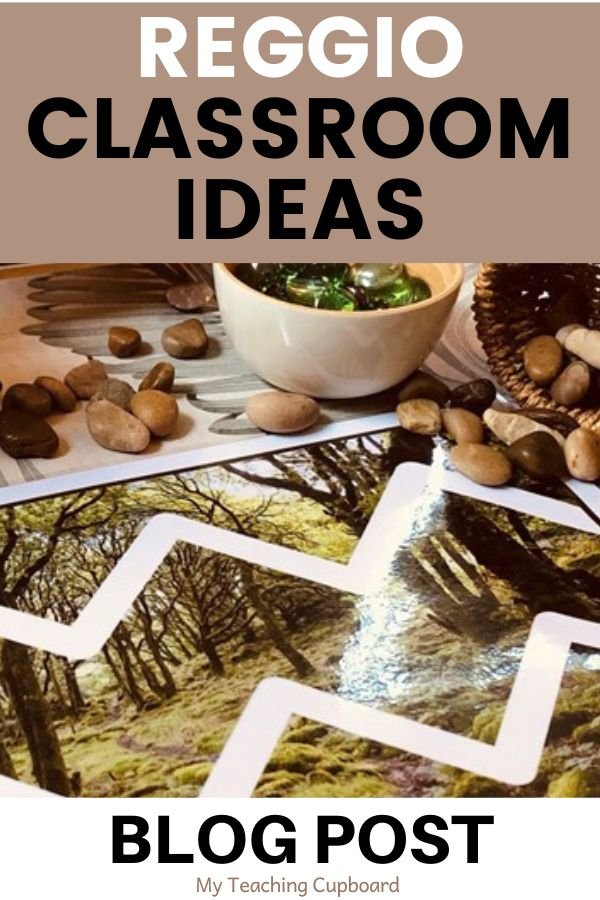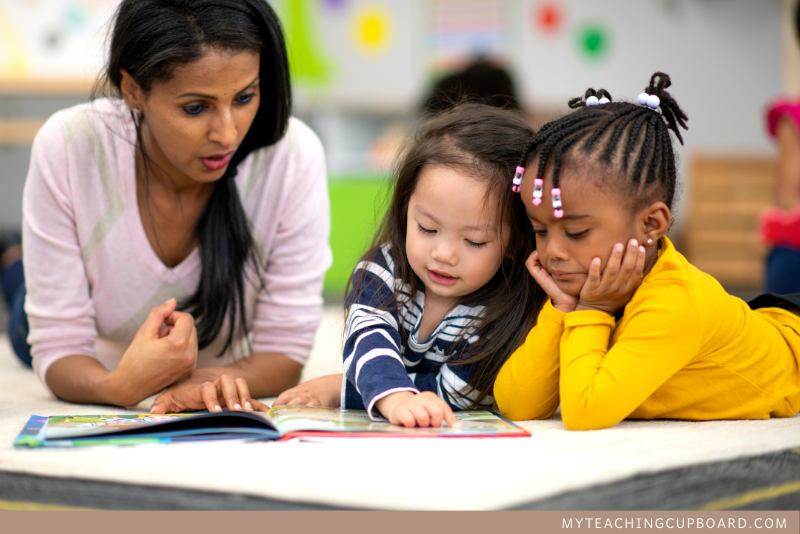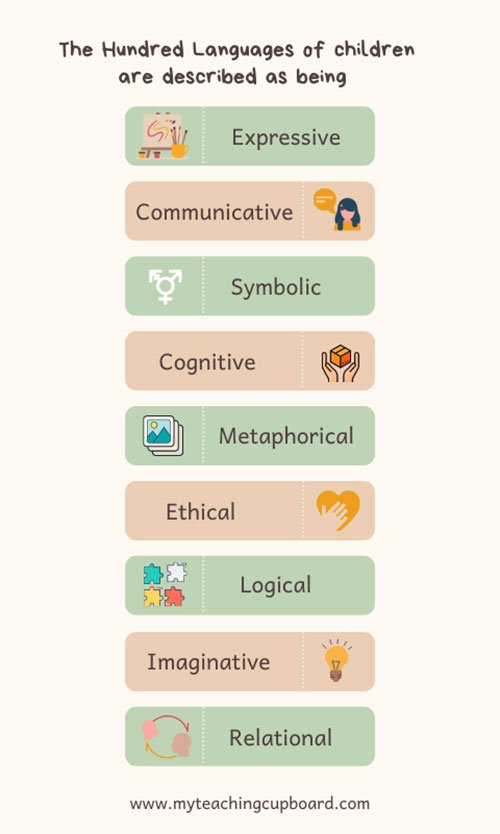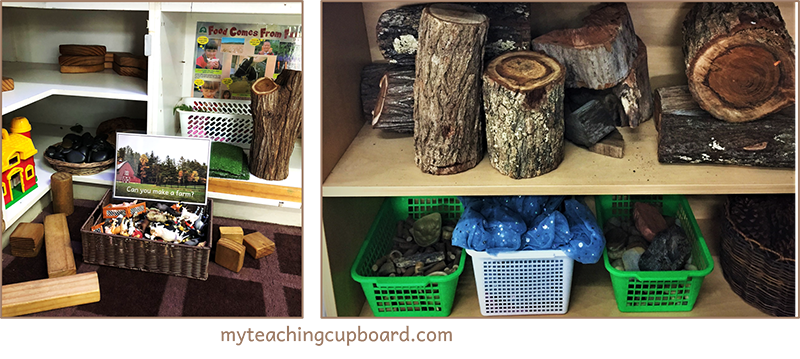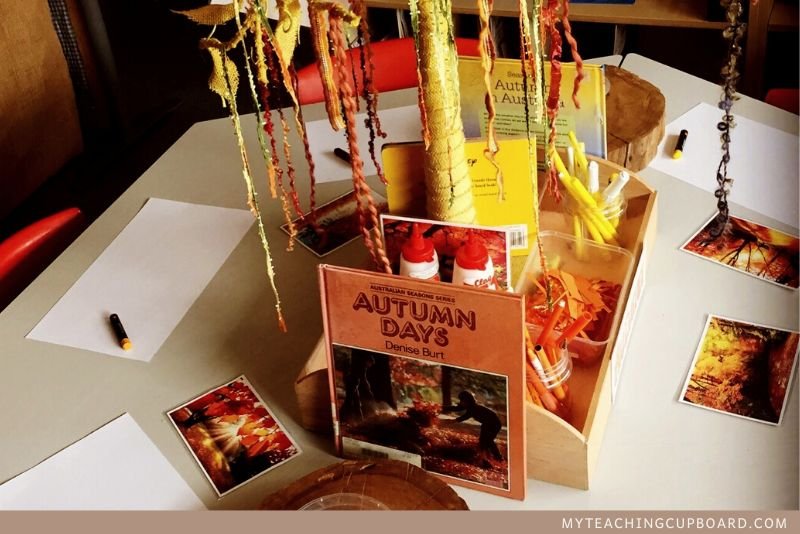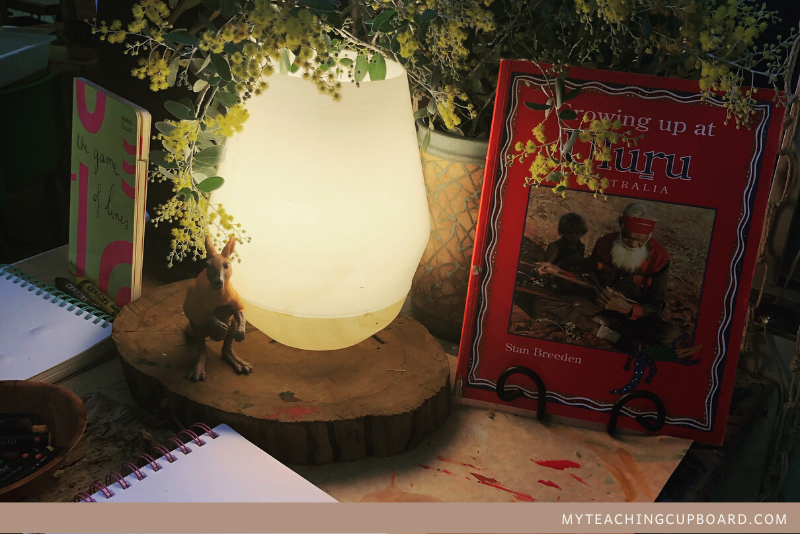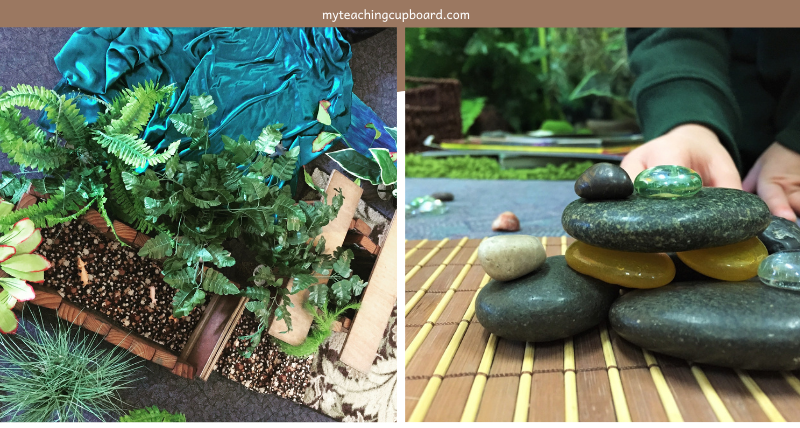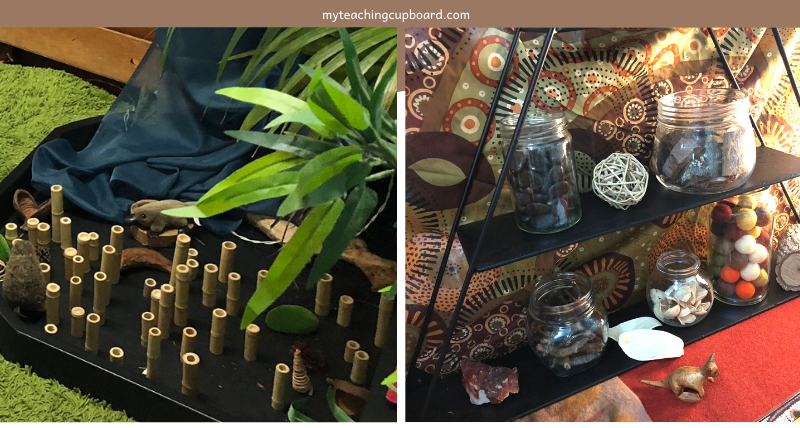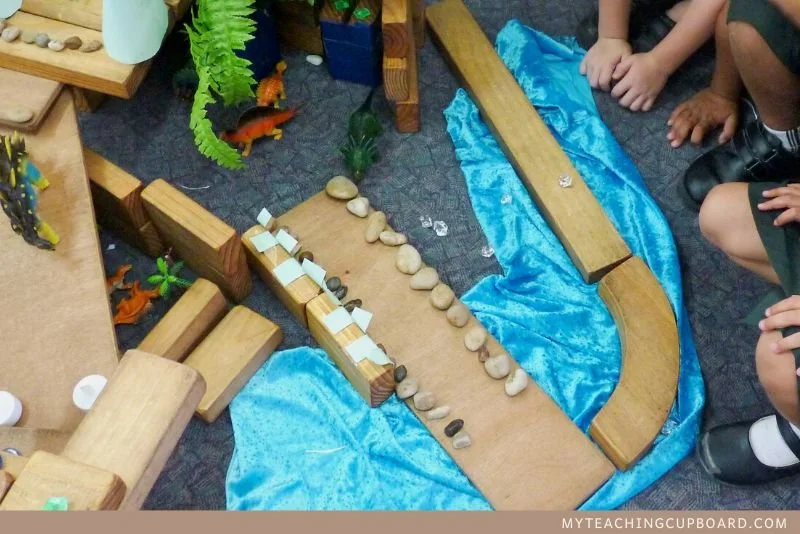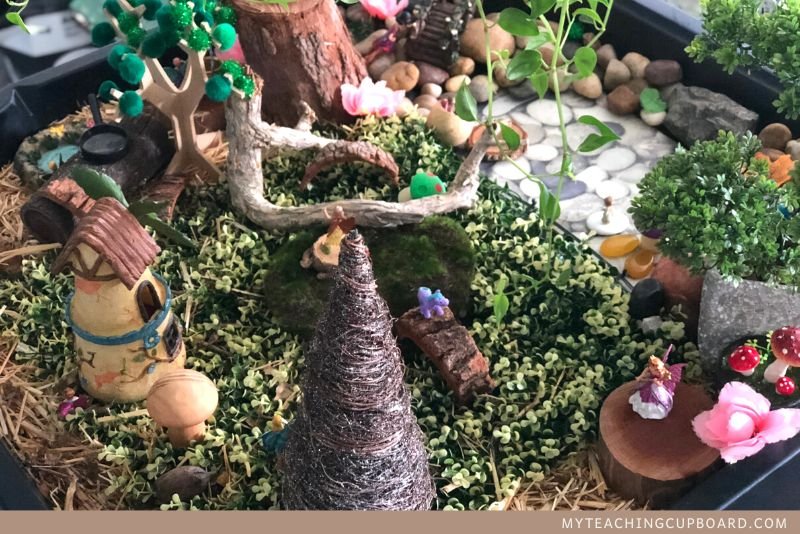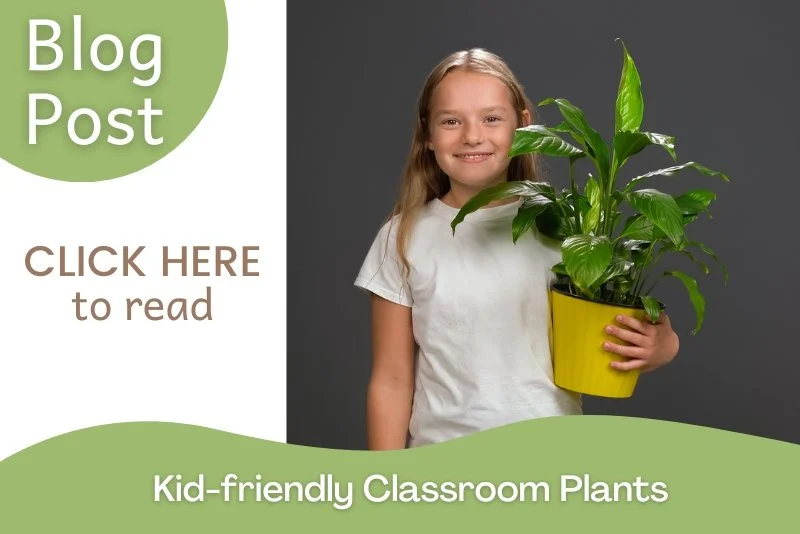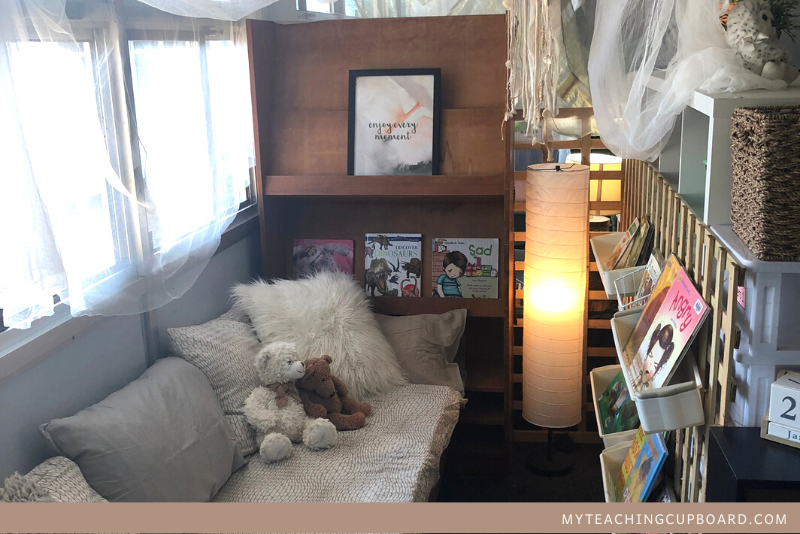Reggio Classroom Ideas for Reggio Inspired Classrooms
If you're looking for Reggio classroom ideas, you've come to the right place. There are many innovative ways to transform your classroom and spark your student's curiosity if you use the Reggio Emilia approach as inspiration.
In this blog post, you will learn about the essential principles of the Reggio philosophy and explore the must-have elements of an early education Reggio Emilia classroom. You will also discover plenty of Reggio-inspired classroom ideas and activities. By the end of this post, you'll be able to inject some Reggio inspiration into your classroom and be well on your way to becoming a Reggio-inspired teacher.
If you are a dedicated play based teacher like me, you are always on the lookout for teaching approaches that can ignite that passion for learning we want in our students. One approach that has been on my radar for many years is the Reggio Emilia approach.
At first glance, many teachers think this approach is all about creating a classroom environment with neutral tones, natural classroom resources, and beige furnishings. But this approach is so much more.
Yes! The environment is very important in a Reggio classroom. You have probably heard about how this innovative pedagogy regards the environment as the third teacher. But let’s look at what this approach to teaching is really about.
What is the Reggio Emilia Approach?
The Reggio Emilia approach is an educational philosophy originating from the small northern Italian town of Reggio Emilia. It values child-led learning, the role of the teacher as a facilitator in the learning, and the importance of creativity and collaboration.
This is quite an innovative philosophy founded in Italy after World War II. Many people attribute the philosophy to Loris Malaguzzi (1920-1994). This Italian educator played a significant role in shaping the Reggio Emilia approach, but the Reggio philosophy was actually developed by a group of educators, parents, and community members.
Together they created an insightful and high quality educational system admired by educators around the world. These innovative educators set up a Reggio school that valued children as active, capable, and curious learners.
Since its very beginnings, the Reggio Emilia approach has gained international recognition and has influenced teaching practices and curriculum development all over the world. The core principles of the approach continue to inspire educators like us.
At its core, the Reggio Emilia approach is all about the idea that children are active participants in their own learning journey. Rather than being seen as vessels to be filled up with knowledge, they are seen as curious, capable, and full of potential.
One of the reasons I love this approach so much is because I share this image of the child. I also believe children are capable and active learners.
The Reggio philosophy also encourages teachers to listen, observe, and respond to the unique interests and needs of each child. Even more reasons to love this amazing approach to education.
Now let’s explore the Reggio idea of the environment as a teacher. A Reggio teacher will go to great lengths to create a rich and dynamic learning environment that goes way beyond superficial aesthetics.
While aesthetics plays a role in the Reggio Emilia approach, it's not just about the classroom's appearance. The approach emphasises the environment as a third teacher that promotes curiosity, exploration, and collaboration among students.
It's about creating an inviting and stimulating space that encourages meaningful learning experiences. You can learn more about how this works in my comprehensive blog post: Environment as the Third Teacher
Another common misconception we need to address is the idea that the Reggio Emilia approach is only suited to art or creative subjects. No! The Reggio Emilia approach is not limited to specific subjects.
It can be applied across all disciplines and all age groups. The approach values children's natural curiosity and promotes a child-led curriculum. It uses an inquiry-based learning process that can be integrated into all of your school subjects. It is perfect for teaching maths, science, language arts, and social studies.
The Reggio Emilia approach does not require a specific curriculum either. There is no predefined curriculum in the Reggio approach. Instead, it is a flexible and adaptable framework that promotes child-centred learning.
Teachers adopt the role of co-learners in this environment. They observe and respond to children's interests and ideas. Reggio educators guide the children’s learning through thoughtful questioning and learning provocations. You can read more about learning provocations and how to purposefully set them up like the Reggio teachers do HERE on this blog post: Reggio Emilia Provocations
Many educators argue that the Reggio Emilia approach is too unstructured and lacks academic rigour. It is true that the approach values child-led exploration, but that certainly doesn't mean there is a lack of formal structure or academic rigour.
In fact, Reggio teachers very carefully scaffold their student's learning experiences. Professional observations, documentation, and thoughtful planning ensure the Reggio child meets developmental milestones and achieves learning objectives.
Unfortunately, many teachers think this style of teaching is only for young children. The Reggio Emilia approach originated in preschool and early childhood education, but it can also be adapted to older age groups. The emphasis on collaboration, critical thinking, and creativity can benefit students of all ages.
You might be wondering if implementing the Reggio Emilia approach requires specialised training, and I had the same question too. While professional development and training in this approach can be helpful, teachers can still begin by integrating some of its core principles into their classrooms. You don't need to be an expert right from the start.
Take steps to incorporate Reggio ideas and practices, and you will be well on your way. Focus on observation, listening to your students, and providing open-ended learning opportunities. You can become Reggio inspired!
What Does Reggio Inspired Mean?
Being Reggio-inspired means adopting an educational approach and philosophy that takes inspiration from the Reggio Emilia approach. If you believe in a child-centred educational philosophy that values children as competent, capable, and active learners, then you are already Reggio-inspired.
A Reggio-inspired educator should do more than simply copy the Reggio Emilia model. It is very important and central to the Reggio Emilia philosophy of education that educators adapt the core Reggio Emilia principles to fit their own unique context and needs of their own classrooms.
You can’t really be a Reggio teacher unless you live and teach at the Reggio school in Reggio Emilia. You can, however, become a Reggio-inspired teacher.
To become more Reggio-inspired, you should explore the core principles of the Reggio Emilia approach and adapt them to your circumstances. First, we need to understand the core principles of the Reggio philosophy. Then, we can begin to align them to our personal teaching practices and our setting.
The Core Principles of the Reggio Emilia Approach
Let’s look a little deeper into the idea of being "Reggio-inspired" and the core principles of the Reggio Emilia approach. Here’s a general overview of the core Reggio principles:
Child-Led Learning
At the heart of the Reggio Emilia approach is the belief that children are competent, capable, and active learners. Educators who are Reggio-inspired prioritise the child's interests, ideas, and abilities. They view children as collaborators in the learning process. They respect and value every child’s thoughts and contributions. It is expected the children will take an active role in shaping their educational journey.
This approach places the child at the centre of the learning process. Children’s interests, questions, and ideas are valued. The teachers in a Reggio classroom act as facilitators. They observe and document the children's learning journeys, and they use their observations to inform their planning. They design activities or learning invitations that cater to the needs and interests of their students.
In this way, the Reggio Emilia educators deliver an emergent curriculum. This is a curriculum that is responsive to the interests and needs of the children. In an emergent curriculum, you need to observe, listen, and respond to your children's ideas and offer learning experiences to meet their developmental needs and interests.
Reggio-inspired practices closely align with constructivist theories of learning. These theories suggest children actively construct their knowledge and understandings of the world through hands-on experiences and interactions with their environment.
The Role of the Environment
The classroom environment is considered the third teacher in the Reggio approach. It is carefully designed and organised to be aesthetically pleasing and inviting. Reggio classrooms are often filled with natural materials and resources that encourage exploration, creativity, and independence.
Reggio-inspired educators recognise the importance of the learning environment, so they design warm, inviting, and engaging classrooms. Their goal is to provide a safe and supportive space that promotes curiosity and invites exploration.
The physical space is considered the third teacher because it plays an important role in teaching the children. To be Reggio-inspired, you should set up your classroom learning environment in such a way that it invites children to explore their interests and the curriculum learning intentions. It needs to be age-appropriate and cater to your students' diverse developmental needs. This means you will need to offer a range of materials and resources that encourage purposeful and engaging learning opportunities.
Documentation
Documentation is another core principle of Reggio teaching. Both the teachers and the students document the learning process through photographs, videos, drawings, and written reflections. It helps everybody reflect on their experiences, make connections, and revisit their ideas. This all helps lead to deeper learning.
Because the documentation panels display the children's work, ideas, and progress, it also fosters a sense of pride and ownership in the learning.
We use learning walls and often document our learning journey, but we can take this to another level when we use the Reggio practices as inspiration.
Here are some things to think about if you want to use Reggio-inspired documentation practices in your classroom to enhance your student’s learning experiences and create a more dynamic and reflective classroom environment.
Document Learning Journeys: As already mentioned, we encourage our students to document their learning journeys through photographs, drawings, and written reflections. By doing this, we gain a deeper understanding of the learning process and can often identify other areas that require further exploration.
Reflective Documentation: Documentation allows us to reflect and review our teaching practices and the learning experiences we have provided our students. In Reggio classrooms, teacher reflections are very important. They help educators identify the effectiveness of different teaching strategies and learning provocations. Documentation is not just for student learning. It can help us as teachers to see what has worked well and what areas have room for improvement. By engaging in ongoing reflection, teachers can continuously adapt and refine their approaches to better meet the needs of their students.
Making Learning Visible: The idea of making the learning visible is another concept that came from the Reggio Emilia classrooms. It stems from the belief that the learning process should be made transparent and visible to students, teachers, and parents. By making learning visible, Reggio educators can provide opportunities for their children to reflect on their experiences, connect their ideas to broader concepts, and engage in metacognition (thinking about their thinking). This all helps to make the documentation walls a useful working document and not just something we have to tick off a list of requests given to us from admin.
Collaborative Learning: Effective documentation is a collaborative process. It involves both teachers and students. Do you encourage your students to actively participate in documenting their learning? It is worth thinking about. Reggio teachers have found that collaborative documentation makes their students more engaged and invested in their education. It also empowers students to take ownership of their learning and gives them the confidence to share their insights with others.
Building Relationships with Families: Documentation walls can provide a valuable way for you to communicate with other teachers, your students, and their families. We can learn from the Reggio style of documentation and how they use bulletin boards to share students' learning experiences with parents or caregivers. It is a great way to help them understand their child's progress, interests, and strengths, and it will also build a stronger home-school connection.
We can become Reggio-inspired by embracing these Reggio documentation practices. It will help enrich our classrooms by creating a more student-centred and reflective learning environment. Overall, it will be a better educational experience for us and our students.
Collaboration and Communication
The Reggio Emilia approach has social interaction and communication as another of its core principles. The educators encourage and expect learning to happen through collaborative projects and group work. The children are supported to develop social skills that support teamwork, problem-solving, and exchanging ideas.
To create a Reggio-inspired classroom, we will also need to emphasise collaboration. We can do this by providing opportunities for our students to work in small groups and plan for cooperative learning experiences. We will also need to actively listen to our children, encourage open communication and respect their thoughts and opinions.
It all comes down to creating a classroom community, and you can read more about it in this blog post here: How to Build a Classroom Community.
Inquiry and Curiosity: Reggio-inspired classrooms encourage their children to ask questions, explore, and investigate topics of interest. The teachers set up learning provocations and support their children to find answers through research and hands-on experiences.
Reggio-inspired teaching really goes hand-in-hand with an investigative pedagogy and play based learning. It’s all about developing a culture of inquiry and exploration.
You will need to encourage your students to ask questions, investigate their interests, and seek out answers to their wonders through hands-on learning experiences. This type of learning really is the best! It encourages children to be curious, resourceful, and independent learners.
The Hundred Languages of Children: We cannot explore the core principles of the Reggio Emilia approach without looking at The Hundred Languages of Children. This is a term first introduced to us from the schools of Reggio Emilia.
The hundred languages refers to the belief that children have numerous ways of expressing themselves and understanding the world around them. A hundred and a hundred more. It is a metaphorical term that represents children's countless forms of communication and expression.
Children can use the languages of drawing, painting, sculpting, dancing, storytelling (and many, many more) to communicate their thoughts and understandings.
If you are interested in learning more about the 100 languages of children and downloading a free printable of the poem that Loris Malaguzzi wrote about the 100 languages of children, I urge you to check out this blog post: 100 Languages of Children
It is worth mentioning here that art and creativity are valued highly in Reggio-inspired practices. You may have heard about the Reggio Atelier. The Atelier in a Reggio classroom is a dedicated creative space where children are invited to explore the 100 languages through various art forms and media.
As a Reggio-inspired educator, you will need to recognise the diversity and richness of all the languages children can use to express themselves. In our traditional schools, we tend to focus on literacy and numeracy as our primary forms of communication. This doesn’t really provide many opportunities for children to express themselves creatively.
Artistic activities and open-ended materials will need to be integrated into your curriculum. You will not only need to give children the opportunity to communicate their thoughts, emotions, and ideas through different means, but you will also need to encourage it.
There is a genuine respect for diversity in the Reggio Emilia approach. The 100 languages are symbolic of the deep respect for each child's individuality, cultural background, and experiences this approach has. Diversity is celebrated and used as a foundation for understanding and building relationships in the classroom. I think we have started on our journey to embrace diversity in our classrooms, but we really do have a long way to go yet.
By acknowledging and valuing the many languages of children, you’ll be fostering a holistic approach to learning. Your children's intellectual, emotional, and social qualities will be intertwined so that you will see and teach the whole child.
I suppose you are keen to become a Reggio-inspired educator. That’s why yu are reading this post. In that case, you will need to welcome and respect children's abilities to learn and communicate way beyond the traditional verbal and written language. You will need to respect and nurture all the multiple intelligences your children have. It will be all about celebrating the uniqueness of each child in your classroom.
So will you be Reggio-inspired? Will you adopt and adapt the core principles and values of the Reggio Emilia approach? You’ll need to focus on child-led learning, creativity, collaboration, and nurturing the whole child's development. Educators who are inspired by the Reggio Emilia approach will implement these core principles in their classrooms. They will create an engaging and holistic learning experience for themselves, their students, and their community.
What Does a Reggio Inspired Classroom Look Like?
Now you know how to be a Reggio-inspired teacher, let’s explore what a Reggio-inspired learning environment looks like. Let’s get that third teacher working for you.
A Reggio-inspired classroom is a dynamic and inviting learning environment that reflects the core principles and values of the Reggio Emilia approach.
While each Reggio-inspired classroom should and will look different, they all share common characteristics. They all support child-led learning, creativity, collaboration, and a strong sense of community. Here are some key features of a Reggio-inspired classroom:
Natural and Aesthetically Pleasing Environment: The classroom is designed to be aesthetically pleasing and organised. There is a beautiful simplicity with careful attention to detail. It uses natural materials like wood, plants, and natural fibres to help create a warm and calming atmosphere.
Flexible Learning Spaces: The classroom provides flexible learning spaces that can be easily rearranged to accommodate various activities and projects. Flexible learning furniture is also used to cater to all the diverse needs of the students. Spaces like these provide ideal learning conditions and encourage children to move freely and collaborate with others.
Atelier (Creative Studio): Reggio classrooms have a dedicated creative space, often referred to as the Atelier. The Atelier in a Reggio school is a room children can freely use. You don’t need to have a separate Atelier room like they do in Reggio Emilia, but you should provide a dedicated art area in your classroom that is available for artistic exploration and self-expression. It should have a variety of art materials and tools for children to use and allow them to engage in creative activities at their own pace.
Documentation Displays: As we have already discussed, documentation is a core principle of Reggio classrooms. The Reggio Emilia classroom showcases documentation panels that display children's work, projects, and learning experiences. These panels highlight the learning process and visually reflect the children's learning journey.
Open-ended Materials: Ah – one of the core resources in any play based learning environment. Reggio-inspired classrooms offer a wide range of open-ended materials. Loose parts, blocks, art supplies, and natural elements are must-haves. These materials spark creativity and develop higher order thinking skills.
Inquiry and Investigation Areas: Inquiry-based and play-based learning areas are a big part of any Reggio-inspired environment. These learning provocations are sometimes called invitations for learning because they are thoughtfully set up to spark curiosity and invite learning and exploration. They can focus on different subjects, curriculum learning intentions, children’s interests, or developmental needs. A good learning provocation will invite children to investigate and ask questions.
A Reggio-inspired classroom is a vibrant and engaging space that values each child's unique qualities. It is a place where children's voices are encouraged and heard. Their ideas are valued, and their natural curiosity and creativity are nurtured. You can create a third teacher by providing a supportive and stimulating environment.
One of the fundamental aspects of the Reggio Emilia classroom and philosophy is the concept of the classroom environment as the third teacher. You can begin to use this philosophy by evaluating your classroom spaces. Is your learning environment inviting, uncluttered, and conducive to learning? Natural light and neutral colours are just the beginning. Setting up a classroom that acts as a third teacher is way more than creating a physical environment.
I like to set up spaces that I call investigation areas in my early childhood settings. They focus on the curriculum, the interests of my students and their developmental needs. The idea is to plan and set up a classroom that meets the needs and interests of the students as they explore various topics within the curriculum.
When we create an active learning environment that encourages exploration, collaboration, and creativity, our students will be highly engaged. They will also be building a love for learning that goes way beyond the confines of a mandated curriculum.
If you want to take a peek at my classroom and the ten areas I recommend you need in order to start your Reggio or play based journey, check out this blog post: The 10 Essential Areas of A Play Based Classroom
You might be interested in basic design principles and how you can use them to create a Reggio-inspired environment. You can use the tricks of the interior decorating trade to design a Reggio-inspired classroom that aligns with the Reggio educational philosophy.
Use Natural Light and Create Warmth: Use natural light in the classroom whenever possible. Avoid harsh fluorescent lighting and consider using soft, warm-toned lamps instead. Use sheer or light-coloured curtains on your windows so the sunlight can filter through. Natural and warm lighting helps to create a sense of comfort and calmness. Harsh, bright artificial lighting creates more of a sterile ambience, so I always opt for warm-toned and soft lighting. Even choosing warm white light bulbs can have a big difference.
Use Natural Materials: Using natural materials helps create a calmer classroom and is more sustainable and environmentally friendly. Think about using materials like wood, stone, and natural fibres in your classroom. It’s a common interior design trick to create a comforting environment with natural materials. It subconsciously creates a connection to the environment and encourages a sense of calm and comfort. Using elements from nature can also help to create a soothing environment. Natural elements like plants, flowers, rocks, and shells can all help in a nature-inspired classroom design. Consider using natural artwork to also help connect children to the natural world.
A Neutral Colour Palette: If possible, choose a soothing and neutral colour palette for your classroom. Earthy tones, pastels, and muted colours will all work well in Reggio-inspired spaces. You can use brighter colours strategically to highlight specific areas or learning centres, but avoid overwhelming the room with too many bright or bold colours. Colours found in the environment, like greens and browns, are great for helping to connect to nature and are perfect if you want a neutral colour palette.
Display Child-Centered and Created Decorations: Display children's artwork, projects, and creations throughout the classroom. This showcases their creativity and makes the space feel personalised. Using children’s work to decorate the classroom goes a long way in fostering a sense of ownership too. As you know, Reggio documentation displays are a core design principle of Reggio-inspired classrooms, so make sure to designate a space for documentation panels that showcase children's work, their learning processes, and reflections.
At the start of school, it is easy to get carried away and decorate the room with all manner of teacher-created printables and visuals. If you can hold off and involve the children in decorating the classroom, you’ll co-create the space and foster a sense of ownership and pride in their learning space. I have found a noticeable difference in the way the children respect and care for the classroom and the resources when I do this. I have also noticed that children are more likely to actually use and refer to learning posters and teaching resources that they have had a role in creating.
The Rule of Threes: The rule of threes is one of my favourite design tricks. It’s a simple yet highly effective design principle that involves grouping items in threes. It creates visual balance and harmony. In a Reggio-inspired classroom, you can apply the rule of threes whenever you are arranging learning materials or setting up a provocation for learning. For example, group three paintbrushes together or place three different-sized plants together. Put three cushions together in your reading area. You can mix up the collections. Place three items from nature (a shell, a plant and a stone) together to create curiosity and interest. Try it. You’ll be surprised how much difference this little design hack will make.
Mirrors and Reflective Surfaces: Most designers love using mirrors and reflective surfaces to create interest and a focus point in a room. You can apply this concept to a learning invitation. Use mirrors in various parts of the classroom to invite children to view things from different perspectives. Mirrors are also wonderful for creating opportunities for self-reflection and self-discovery. Light tables, reflective surfaces and mirrors can all promote quiet contemplation and discovery.
Open and Organised Storage: Do yourself a favour and provide open and organised storage for all the classroom materials and resources. Transparent containers can be so useful for storing everything from loose parts to collage supplies. Open shelves are also important because they allow children to easily access the resources and see what's available. You’ll thank me for this tip at re-set or tidy-up time. If everything is organised and has a place, your children will know where to put everything, making re-setting much easier and more productive.
By following these simple design hacks, your Reggio-inspired classroom can become a peaceful, calm, and inspiring space that supports children's curiosity. The environment really can become an active partner in the learning process, so make sure you set up the classroom purposefully.
What are the Must-haves in a Reggio Emilia Classroom?
In a Reggio-inspired classroom, there are no real must-haves. The Reggio approach is more about the way you run the classroom than what you have in it.
There are some things that certainly help to create a Reggio atmosphere or Reggio-inspired learning environment. These are the elements I think are important for supporting the principles of the Reggio Emilia approach:
Open-ended Materials
Open-ended materials like loose parts, art supplies and construction sets are an important part of any play based learning environment. If you want to put a Reggio spin on these types of resources, focus on using natural materials like wooden blocks, shells, stones, leaves, and natural fabrics. You might like to also consider Reggio-inspired and inquiry resources like light tables, magnifying glasses, microscopes and mirrors.
Light and Space
Natural light and soft lighting from fairy lights and lamps all help create a calm environment and can even influence your students' moods. You still need to ensure your classroom is well-lit. Eye strain can cause headaches and frustrated students. You will also need to make sure there is enough space for children to collaborate and work together on projects. Having enough room to explore the resources is important.
Learning Invitations or Learning Provocations
A variety of spaces that suit the interests and needs of your students is another important element of a Reggio classroom. You should have a combination of quiet areas, collaborative learning spaces, interest areas and curriculum aligned areas. Consider setting up an atelier, a reading corner, a sensory play space, a nature table, a dramatic play area, and a block play area. They would be my priorities. You can learn more about how I set up my classroom here: The 10 Essential Areas of A Play Based Classroom.
Other areas you might like to consider would include a tinkering table, a light table, a collage area, a writing table, a math area, a fine motor station and a small world space. Setting up inquiry-based stations that are specifically related to your student's interests is also a good idea. Fairies and dinosaurs seem to always be popular in my room.
Documentation Tools
I love using a variety of tools for my students to document their learning. Provide cameras, clipboards, Ipads, and writing materials so the students can quickly and easily document their observations, ideas, and discoveries independently. Make sure every area has at least one tool for documentation.
Child-made Decor
It is really important that your classroom is decorated with the children's artwork, projects, and creations. Very often, posters and cards can be made by the students in the Atelier or at the Writing table. Add these to classroom wall displays, learning invitations, and investigation areas.
The more of these elements you can incorporate in the classroom, the more your environment will look like a Reggio-inspired learning environment. This doesn’t mean it is though. You can create a Reggio-inspired classroom and still not create an environment that emphasises each child's unique qualities and the belief that they are competent and capable learners. Make sure your teaching values and practice align with the Reggio philosophy, and you’ll be well on your way to creating a Reggio classroom.
Reggio Emilia Classroom Resources
When setting up a Reggio Emilia-inspired classroom, it's important to have a variety of resources and spaces that support active child-led learning, creativity, exploration, and collaboration. Some of the most asked questions I receive from teachers setting up their play-based classroom are:
Where do I start?
What resources should I buy?
The priority of these resources will vary depending on your specific teaching circumstances, your goals and your classroom budget. Here are 25 Reggio Emilia classroom ideas and resources you might like to consider in order of priority:
Open and Flexible Space: Arrange your classroom furniture to create separate areas for different activities. Provide room for movement and collaboration.
Neutral Colours and Tones: Use neutral colours for walls, rugs, furnishings and materials to create a neutral, calming space that lets the children's work stand out.
Natural Loose Parts: Wooden blocks, sticks, stones, feathers, shells, pinecones, and other natural objects for open-ended exploration and construction. Think about storing these in clear containers, wooden crates, and woven baskets.
Art and Stationery Supplies: Children can use a wide range of art materials and writing supplies to express their ideas. Include paint, brushes, crayons, markers, coloured pencils, scissors, glue, and recycled materials like cardboard and fabric.
Reggio Learning Provocations: Teacher-planned but student-led learning invitations with hands-on materials related to various subjects and interests. Children should be able to explore and investigate them independently. Find or create Reggio-inspired learning prompts that align with the Reggio philosophy.
Documentation Tools: Cameras, clipboards, voice recorders and journals for children to document their observations, ideas, and reflections.
Flexible Seating: Provide a variety of seating choices like floor cushions, mats, bean bags, and low tables.
Soft lighting and Table lamps: Use string lights like fairy lights, salt lamps and warm white lightbulbs in any lamps. Place the lighting strategically to avoid eye-strain and too much glare.
Reggio Documentation Panels: Display boards or walls to showcase children's work, ideas, and learning journeys. Children's artwork, quotes, and work samples should decorate the walls.
Plants and Greenery: Add plants to bring nature indoors. It helps create a calming atmosphere. Include cuttings and plants from your local environment.
Sensory Bins: Bins filled with sand, water, rice, or other sensory materials for tactile exploration and sensory play.
Meeting Area (Piazza): Set up a comfortable gathering space for group discussions and whole class lessons.
An Atelier for Creative Expression: Set up an art centre with collage and art supplies. Add easels, paper, drawing materials, paints, collage and recyclable materials for box constructions, and any other art materials you would like for artistic expression of the 100 languages.
Malleable Materials: Add sculpting tools and supply playdough, clay, and other materials that allow children to shape and mould.
Dramatic Play Space: Include costumes, props, and a play kitchen for imaginative role-play.
Reggio Math Exploration Shelf or Corner: Math manipulatives and tools for hands-on math exploration like counting manipulatives and measuring tools.
Science or Nature Table: Include science tools like magnifiers, tweezers and test tubes. Add a place to display found objects from nature and the local environment. You might like to also make up Nature Walk and Observation Kits that include binoculars, magnifying glasses, and notebooks for exploring the natural world outdoors.
Classroom Library or Reading Area: Include a diverse collection of books that reflect your local environment, different cultures, interests, and topics to promote literacy and storytelling.
Blocks and Construction Corner: Various blocks and building materials for creative construction and architectural exploration. Include loose parts, natural objects, and other open-ended materials for imaginative play too.
Writing Table: Provide materials for writing and storytelling. Include paper, journals, pencils, markers, and staplers.
Reggio Light and Shadow Play: Add manipulative objects for exploring light and shadow. Include a light table or light projector if possible. A light table provides an opportunity for sensory exploration, tracing, and creating with translucent materials.
Oral Language and Small World Play Area: Add small world scenes, puppets and other storytelling props to promote language development and imaginative play.
Music and Instruments: Musical instruments and a music corner for creative expression and sensory experiences.
Tinkering Table: Provide child-sized tools for deconstructing old appliances, woodworking, and other similar hands-on activities.
Teacher Reflection and Meeting Area: Set up a space for teachers to reflect on children's progress and plan for future activities. Include a teacher reference library with books about the Reggio Emilia approach and related topics.
Please keep in mind that while these resources are valuable, the heart of the Reggio Emilia approach lies in the teacher's ability to observe, listen, and respond to children's interests and inquiries. Flexibility and adaptability are key in a Reggio-inspired classroom. Try to allow the environment and resources to evolve alongside the children's learning journeys.
Remember, the Reggio Emilia approach is not a rigid framework but a guiding philosophy that can be adapted to suit the unique needs of each learning community. It’s not about how big your classroom budget is or about how many natural resources you have. It’s about incorporating the core principles of the Reggio Emilia approach.
Conclusion
By incorporating these core principles and Reggio classroom ideas, you'll be well on your way to creating a Reggio-inspired classroom that nurtures creativity, collaboration, and curiosity in your young students.
If you found this blog post on Reggio-inspired classrooms useful and got some Reggio classroom ideas you can use, other early years teachers might too. Please consider sharing it…
Just CLICK the sharing box below.👇

